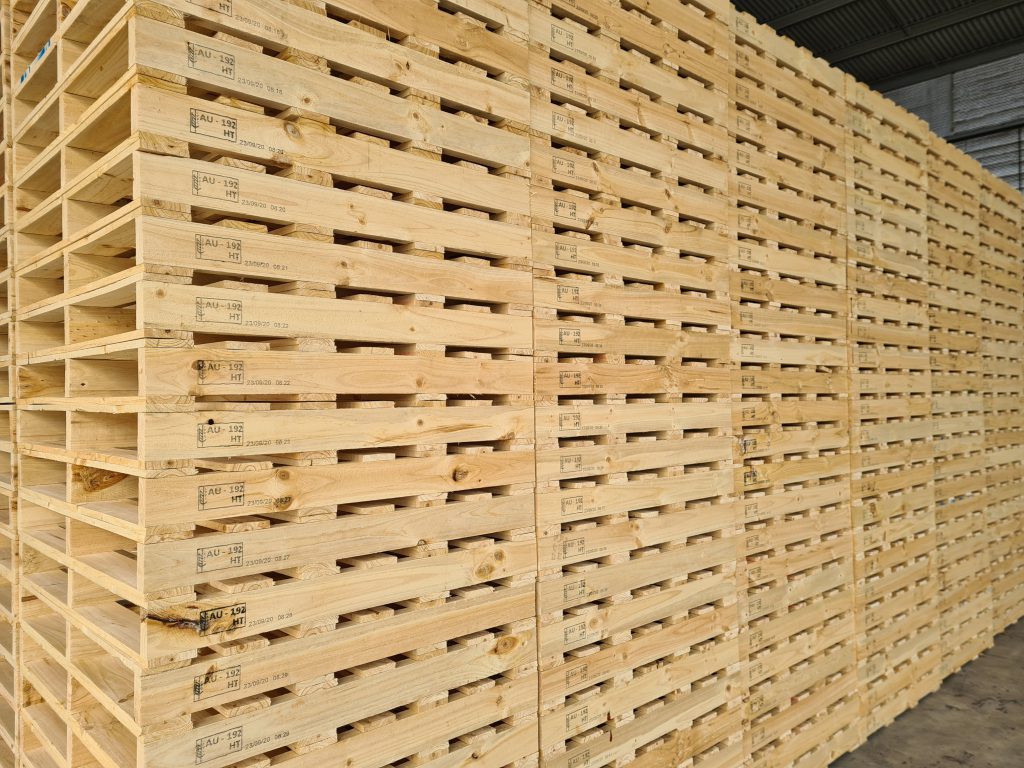Pallets, those simple yet vital platforms for stacking, storing, and transporting goods, play an important role in global supply chains. However, underlying their apparent simplicity lies a complicated network of rules and compliance standards that manufacturers, distributors, and logistics businesses must follow.
This blog will delve into pallet regulations and compliance, investigating why they are important, what standards exist, and how businesses can guarantee they stay on the right side of the law while optimising their operations.
Why Are Pallet Regulations Important?
At first glance, a pallet may not appear subject to strict requirements, yet these simple constructions have far-reaching ramifications. The following are the key reasons why pallet regulations are important:
Product Safety: Pallets are frequently used to move goods, and incorrectly built or made pallets can cause product damage or even accidents. According to regulatory rules, pallets must be structurally sound and offer no risk.
Cleanliness and sanitation: Pallets in industries such as food and pharmaceuticals must conform to high cleanliness standards to avoid contamination. Materials, cleaning processes, and other issues that may affect product safety are addressed in the regulations.
International trade: Pallet rules can have an impact on international trade. Pallets used in imports and exports may have different specifications in different nations. Noncompliance may result in shipping delays, fines, or rejection.
Pallet Regulations and Standards
Let’s look deeper into pallet rules and standards better to appreciate their importance and impact on global business.
International Organisation for Standardisation (ISO)
The ISO is a globally known authority responsible for creating and publishing various international standards. ISO has been critical in fostering standardisation, compatibility, and safety in the pallet industry. Some of the most important ISO pallet standards are:
ISO 6780
This standard specifies the fundamental properties of flat pallets in shipping and storage. It specifies pallet dimensions, load-carrying capacity, and design factors. The ISO 6780 standard optimises pallets for usage in diverse logistical operations.
ISO 8611
This standard defines general pallet dimensions and tolerances for freight containers and unit loads.
It contributes to operational efficiency by ensuring that pallets are designed to fit easily with other standard logistical equipment.
European Pallet Association (EPAL)
The European Pallet Association (EPAL) has led in standardising European pallets, particularly the commonly used EUR and EPAL pallets. EPAL establishes manufacturing specifications for pallets and oversees their repair and exchange.
EPAL pallet regulations cover wood quality, fasteners, dimensions, marking, and branding. This dedication to uniformity improves pallet compatibility and aids in mitigating potential challenges in European supply chains.
National Wooden Pallet and Container Association (NWPCA)
The National Wooden Pallet and Container Association (NWPCA) in the United States provides essential information through its Pallet Design System (PDS). This technique enables pallet makers to create pallets that meet load requirements while remaining structurally sound and capable of withstanding various circumstances.
Food and Drug Administration Regulations
The Food and Drug Administration (FDA) establishes requirements to protect the safety and hygiene of pallets in companies that handle food, beverages, pharmaceuticals, and medical supplies. These laws are primarily concerned with preventing contamination and ensuring that pallets do not jeopardise the quality of sensitive products.
Initiatives for Sustainability and Environmental Protection
Sustainability has recently been a major consideration in pallet design and production. For example, the Forest Stewardship Council (FSC) and the Sustainable Forestry Initiative (SFI) set criteria for using responsibly sourced wood in pallet construction.
Furthermore, the desire to use recyclable and environmentally friendly materials has created pallets composed of plastics, composites, and other sustainable materials.
Ensuring Compliance
Compliance ensures product safety and integrity, reduces operational risks, streamlines procedures, and protects your brand’s reputation.
Let’s look at the important factors of compliance with pallet laws and how organisations can satisfy these criteria efficiently.
Material and Design Selection
The path to compliance begins with selecting acceptable pallet materials and their design to meet certain standards. Load capacity, intended application, industry requirements, and environmental variables are all factors to consider.
Different materials, like wood, plastic, metal, or composites, provide different advantages and may
be subject to different restrictions.
Wood Pallets: When choosing wood pallets, businesses must ensure that the wood is sustainably sourced and follows the sustainability requirements established by organisations like the Forest Stewardship Council.
Plastic Pallets: To comply with standards, plastic pallets must be safe for the food and pharmaceutical industries, free of pollutants, and able to tolerate temperature changes.
Metal and composite pallets: Metal and composite pallets, like other materials, must meet industry-specific criteria to ensure durability, load-bearing capability, and compatibility with transportation equipment.
Quality Control and Construction
Pallets that fulfill compliance criteria must follow specified building rules and quality control measures:
Structural integrity: Pallets must be structurally sound to distribute loads properly and withstand the rigors of transit and storage. Compliance entails ensuring that pallets are structurally sound to reduce the risk of collapses or accidents.
Quality Control: Implementing quality control processes during pallet manufacture is critical. Regular inspections and tests can assist in identifying flaws or weaknesses that may jeopardise compliance.
Sanitation and hygiene
Pallets must meet stringent cleaning criteria in areas where hygiene is critical, such as food, medicines, and healthcare:
Cleaning Procedures: Pallets must be cleaned and sanitised regularly to prevent contamination. Establishing standardised cleaning processes that ensure pallets are safe for shipping sensitive materials is required for compliance.
Conclusion
Pallet rules and compliance aren’t the most glamorous aspects of supply chain management, but they’re unquestionably important. Businesses may assure product safety, maintain operational efficiency, and effectively negotiate the difficulties of international trade by adhering to established standards and norms.
Compliance in this area can contribute to seamless logistics, safer products, and a stronger bottom line, whether picking the proper materials, constructing pallets to fulfill weight requirements, or adhering to cleanliness regulations.


